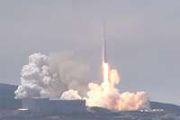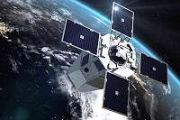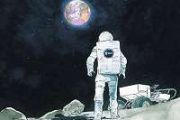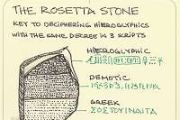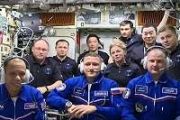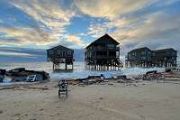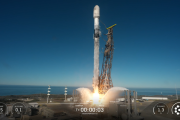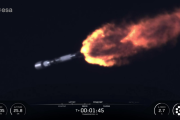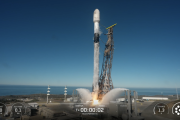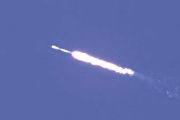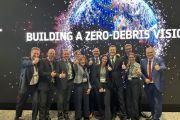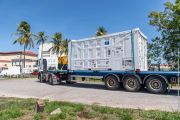
Copernical Team
Sentinel-1D prepares for encapsulation ahead of November launch
 The European Space Agency has confirmed that the Sentinel-1D satellite is fuelled and ready for encapsulation, marking a key milestone in its launch campaign. The spacecraft is scheduled for liftoff on Tuesday, 4 November, aboard an Ariane 6 rocket from French Guiana.
Part of the Copernicus Earth observation programme, Sentinel-1D will continue the mission's delivery of high-resolution rad
The European Space Agency has confirmed that the Sentinel-1D satellite is fuelled and ready for encapsulation, marking a key milestone in its launch campaign. The spacecraft is scheduled for liftoff on Tuesday, 4 November, aboard an Ariane 6 rocket from French Guiana.
Part of the Copernicus Earth observation programme, Sentinel-1D will continue the mission's delivery of high-resolution rad US soliciting new bids for Moon mission amid SpaceX delays: NASA chief
This request seems a bit unusual, so we need to confirm that you're human. Please press and hold the button until it turns completely green. Thank you for your cooperation!
Press and hold the button
If you believe this is an error, please contact our support team.
185.132.36.159 : 186f1e54-86a3-4eed-9be4-7a822857
Remember the moon rover? Teams test a possible Artemis version
This request seems a bit unusual, so we need to confirm that you're human. Please press and hold the button until it turns completely green. Thank you for your cooperation!
Press and hold the button
If you believe this is an error, please contact our support team.
185.132.36.159 : e37ef25c-bf94-49a1-9b5a-e3030240
Starship could cut the travel time to Uranus in half
This request seems a bit unusual, so we need to confirm that you're human. Please press and hold the button until it turns completely green. Thank you for your cooperation!
Press and hold the button
If you believe this is an error, please contact our support team.
185.132.36.159 : 95ebed8a-2037-4187-b60e-a513bfcb
LUNA: Europe’s Moon on Earth
 Video:
00:02:21
Video:
00:02:21
ESA astronaut Matthias Maurer walks across the dusty terrain of LUNA, Europe's Moon on Earth. Nearby, ESA's Argonaut lander mock-up stands ready as he carefully navigates the simulated regolith - the dust, soil and rock on the Moon's surface. Alongside a fellow operator, he rehearses a moonwalk under the harsh glare of Sun simulators that mimic lunar lighting to test scientific tools designed to analyse lunar soil and rock.
ESA's robotic explorers, Interact and Spot, join the scene. Spot, the agile robot dog, picks up a sample while Interact, a wheeled robotic arm, supports this rehearsal of autonomous
Argonaut in LUNA
 Image:
A European lunar landscape: a 1:1 model of ESA’s Argonaut lunar lander at Europe’s Moon on Earth, LUNA.
Image:
A European lunar landscape: a 1:1 model of ESA’s Argonaut lunar lander at Europe’s Moon on Earth, LUNA. 28 Starlink satellites lift on 130th mission of SpaceX's Falcon 9
 SpaceX set a milestone Thursday morning as it marked the 130th launch of its Falcon 9 rocket.
The Falcon 9 that launched 28 Starlink satellites took off at 5:57 a.m. EDT Thursday morning from Cape Canaveral Space Force Station in Florida and deployed the devices into low-Earth orbit some 64 minutes after leaving the planet.
It represented Falcon 9's 130th flight of the year, only
SpaceX set a milestone Thursday morning as it marked the 130th launch of its Falcon 9 rocket.
The Falcon 9 that launched 28 Starlink satellites took off at 5:57 a.m. EDT Thursday morning from Cape Canaveral Space Force Station in Florida and deployed the devices into low-Earth orbit some 64 minutes after leaving the planet.
It represented Falcon 9's 130th flight of the year, only SpaceX launches rockets from opposite coasts, ties mission total
 SpaceX launched a pair of Falcon 9 rockets from opposite coasts Sunday, sending a total of 56 satellites into low-Earth orbit, adding to the growing Starlink commercial fleet.
The first launch occurred at 1:39 p.m. EDT from Cape Canaveral.
Space Force Station and the second lifted off from Vandenberg Space Force Station in California at 12:24 p.m. PDT.
The first launch mar
SpaceX launched a pair of Falcon 9 rockets from opposite coasts Sunday, sending a total of 56 satellites into low-Earth orbit, adding to the growing Starlink commercial fleet.
The first launch occurred at 1:39 p.m. EDT from Cape Canaveral.
Space Force Station and the second lifted off from Vandenberg Space Force Station in California at 12:24 p.m. PDT.
The first launch mar Sentinel-1D fuelled and ready for encapsulation

The launch campaign of the next satellite to join the Copernicus Sentinel-1 mission is progressing on schedule for launch on Tuesday, 4 November, on board an Ariane 6 rocket.
Conditions right Thursday night for Northern Lights in 15 states
 The Aurora Borealis, typically only seen in the farthest northern reaches in the coldest winter months, could be visible in 15 U.S. states Thursday night, scientists reported.
The National Atmospheric Oceanic and Administration issued a geomagnetic storm watch for Thursday, which is responsible for the Northern Lights' unusual geographical visibility.
The storm has prompted a ser
The Aurora Borealis, typically only seen in the farthest northern reaches in the coldest winter months, could be visible in 15 U.S. states Thursday night, scientists reported.
The National Atmospheric Oceanic and Administration issued a geomagnetic storm watch for Thursday, which is responsible for the Northern Lights' unusual geographical visibility.
The storm has prompted a ser 

